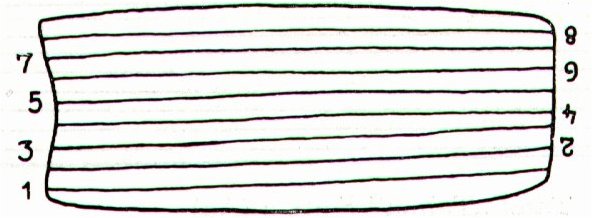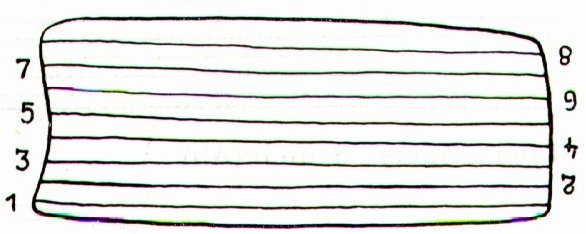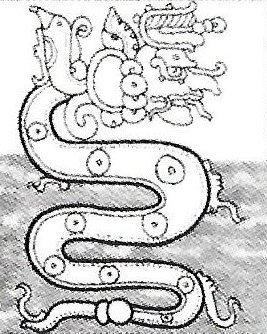Manuscript E says Easter Island was the 8th and final island which the dream soul (kuhane) of the sleeping Hau Maka reached after a long flight across the Sea: Hau Maka had a dream. The dream soul of Hau Maka moved in the direction of the sun (i.e., toward the East). When, through the power of her mana, the dream soul had reached seven lands, she rested there and looked around carefully. The dream soul of Hau Maka said the following: 'As yet, the land that stays in the dim twilight during the fast journey has not been reached.' The dream soul of Hau Maka continued her journey and, thanks to her mana, reached another land. She descended on one of the small islets (off) the coast.  Barthel comments: Easter Island (te pito o te kainga) is the last of all known islands. Seven lands lie before it, but these do not recommend themselves for settlement. Easter Island is the 'eighth land' (te varu kainga). Actually, we are dealing here with a figure of speech because 'seven' and 'eight' used as qualifying quantities play a traditional role in Oceania (Barthel 1962a). While the number seven is known as a topos in MQS., HAW., and MAO., the topos of the number eight goes far beyond eastern Polynesia (MQS., HAW., TAH.). In TON., the number eight is 'a conventional term signifying many or a well-balanced number' (McKern 1929:17), and on Malaita in the southern Solomon Islands, the physical world in its entirety is referred to as 'eight islands' (wālu malau) (Ivens 1927:400). The number eight not only means 'many' but also denotes perfection. Thus, when Easter Island was called 'an eighth land', the expression contained first of all the idea of a 'last' island - an island farthest away from the rest of the islands that make up the oceanic world. At the same time, the expression indicated a special position among the other islands. The idea of groups of seven, which are surpassed by an eight element, seems to belong to the cosmology of Asian high cultures. For example, there are seven planets circling the world axis, which represents the eighth, and therefore central, position. There are 8 rows of glyphs on side a and also on side b of the Small Santiago Tablet (G), received by the officers of the Chilean corvette O'Higgins from Father Roussel on Rapa Nui in 1870, and to be read from right to left and from bottom up with the text upside down in the even rows. Its text is like an undulating vine growing upwards:
Or rather like the first day sign of the Mayas, the Sea-dragon Imix. |


